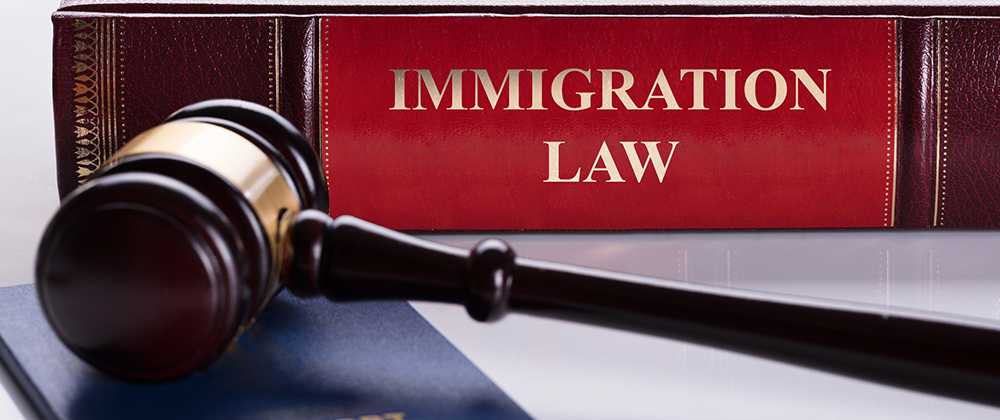In today’s stringent regulatory environment, businesses must be vigilant about compliance with immigration laws, particularly regarding the Employment Eligibility Verification process mandated by the United States Citizenship and Immigration Services (USCIS). The Form I-9, used to verify the identity and employment authorization of individuals hired for employment in the United States, is a critical document in this process.
Failing to maintain I-9 compliance can lead to severe penalties, making it imperative for businesses to adopt a proactive I-9 audit defense strategy. At Oltarsh & Associates, P.C., we aim to help businesses protect themselves from the ramifications of an I-9 audit by offering guidance on best practices and an I-9 audit defense strategy.
Understanding the I-9 Audit Process
An I-9 audit is conducted by Immigration and Customs Enforcement (ICE) to ensure that businesses comply with the Immigration Reform and Control Act (IRCA) of 1986. This act mandates that employers verify the employment eligibility of their employees and maintain accurate I-9 records. During an audit, ICE will review your company’s Form I-9 records to check for compliance.
Employers are typically given a Notice of Inspection (NOI), which informs them of the upcoming audit. From the date of receiving the NOI, businesses have three business days to produce the I-9 records for inspection. ICE will then examine the forms for accuracy and completeness, focusing on ensuring that employees are authorized to work in the United States.
Key Components of I-9 Compliance
Complete and Accurate Form I-9
Each employee must complete Section 1 of Form I-9 by their first day of work. Employers must complete Section 2 within three business days of the employee’s date of hire. It’s crucial to ensure that all sections of the form are filled out accurately and completely. Common mistakes include missing signatures, incorrect dates, and incomplete information.
Employment Eligibility Verification
Employers must verify the employment eligibility of their employees by examining acceptable documents, such as a U.S. passport, permanent resident card, or employment authorization document. These documents must be current and unexpired as of the date of hire. Employers should carefully review these documents for authenticity and ensure they match the information provided on the Form I-9.

Maintaining I-9 Records
Employers must retain I-9 records for all current employees and for a specified period after employment ends. The retention period is three years after the date of hire or one year after the employment ends, whichever is later. Proper storage and organization of these records are essential to ensure they can be quickly and accurately produced during an audit.
Regular Internal Audits
Conducting regular internal audits of your I-9 records can help identify and correct errors before they become a problem during an official audit. Internal audits should review all forms for completeness, accuracy, and proper document retention. This proactive approach can significantly reduce the risk of non-compliance.
Preparing for an I-9 Audit
Implementing a Robust I-9 Compliance Program
Developing and implementing a comprehensive I-9 compliance program is the first step in protecting your business from an audit. This program should include detailed procedures for completing and retaining Form I-9, training for employees responsible for I-9 compliance, and regular internal audits.

Training and Education
Training employees who handle I-9 compliance is critical. They should be well-versed in the requirements of the Form I-9, the importance of accurate and timely completion, and how to identify acceptable documents for employment eligibility verification. Regular training sessions can help ensure that everyone involved in the process is up-to-date on the latest regulations and best practices.
Using Electronic I-9 Systems
Many businesses are turning to electronic I-9 systems to streamline the process and reduce errors. These systems can help ensure forms are completed correctly, store documents securely, and provide easy access for internal audits and compliance checks. Additionally, electronic systems often come with reminders and alerts to help manage the expiration dates of employment authorization documents.
Responding to a Notice of Inspection
When you receive a Notice of Inspection, it’s crucial to act quickly and efficiently. Gather all I-9 records and ensure they are organized and complete. It’s advisable to consult with an immigration attorney who can guide you through the process, help address any deficiencies, and represent your interests during the audit.
Addressing Deficiencies
If deficiencies are found during an internal audit or an ICE audit, it’s essential to address them promptly. Correcting errors and ensuring that all I-9 forms are complete and accurate can mitigate potential fines and penalties. Employers should document all corrective actions taken to demonstrate a good-faith effort to comply with immigration laws.

Common Pitfalls and How to Avoid Them
Incomplete Forms
One of the most common issues found during I-9 audits is incomplete forms. Ensure that all required fields are filled out, signatures are in place, and dates are correctly entered. Double-checking each form for completeness can prevent this common pitfall.
Accepting Incorrect Documents
Employers must only accept documents that are listed as acceptable for employment eligibility verification. Accepting incorrect or expired documents can lead to compliance issues. Training employees to recognize acceptable documents is vital.
Failure to Reverify
Employers must reverify the employment eligibility of employees whose work authorization documents have an expiration date. Failure to do so can result in non-compliance. Implementing a system to track and manage document expiration dates can help avoid this issue.
Inadequate Recordkeeping
Maintaining accurate and organized I-9 records is essential. Inadequate recordkeeping can lead to difficulties during an audit. Ensure that all forms are stored securely and can be easily accessed when needed.
Conclusion
Protecting your business from I-9 audits requires a proactive and diligent approach. By implementing a robust I-9 compliance program, conducting regular internal audits, training employees, and using electronic systems, you can significantly reduce the risk of non-compliance and the associated penalties.
If you are concerned about I-9 compliance and want to protect your business from the risks of an audit, contact Oltarsh & Associates, P.C. today for a free consultation.
Let us help you navigate the complexities of I-9 compliance and ensure that your business is prepared with an I-9 audit defense strategy. Reach out to us to schedule your consultation and safeguard your business from potential penalties.






